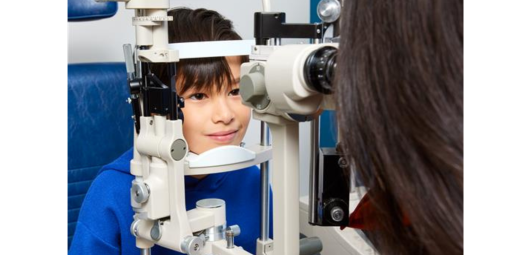
Vision Revolution: Optimizing Eye Care for the Future of Canadian Optometry
As Canada’s eye care landscape evolves, professionals face a multifaceted challenge: providing timely, high-quality vision care in the face of growing demand and limited resources. From an aging population and rising rates of childhood myopia, to shifting work-life balance among optometrists, access to eye care is becoming increasingly complex. The solution? A mindset shift towards Eye Care Optimization—a holistic approach that transforms practices into models of efficiency, teamwork, and patient-centric care.
Why Eye Care Optimization Matters
Canada’s access-to-care dilemma stems from several interconnected factors:

Eye Care Optimization offers a strategic response. It’s not just about increasing volume but enhancing the quality of care through smarter systems, empowered teams, optimized delegation, and innovative thinking.
The How of Optimization
Optimization starts with introspection: Are clinics challenging traditional practices, or are they falling into the trap of “yeah, but” thinking? At FYidoctors, we adopted a collaborative and structured approach, which led to the creation of a comprehensive collection of our clinics’ best practices. This culminated in the Eye Care Optimization Playbook, offering a framework to rethink and improve eye care delivery and operations.
Key strategies include:
- Patient Pathway Redesign: Efficient scheduling starts with staggering exam times for smooth check-ins and pretesting. Then, alternate partial or child exam slots between doctors to give pre-testers time to catch up. Think about whether partial exams need full exam slots and if telehealth follow-ups could improve the patient experience. Also, have a solid cancellation/no-show strategy to fill open slots. Smart scheduling systems, like staggered exams, help keep things running smoothly while focusing on patient needs. Set up your scheduler to work for you and reduce bottlenecks with telehealth and effective no-show strategies.
- Pre-Testing and Data Collection: As technology advances and scopes of practice expand, there’s an increasing need to delegate more data collection tasks. By delegating responsibilities like case history, medication history, dilation (with detailed protocols), exam room setup (including the phoropter and images), and potentially visual acuities, optometrists gain more time to focus on interpreting the data and educating their patients. This ultimately enhances the patient experience.
- Setting Optometrists Up for Success: Streamlining exam lanes, ensuring clear end-of-exam notes and communication, and maximizing delegation allow optometrists to focus on their primary roles as educators, diagnosticians, and life enhancers through personalized recommendations.
Education and Handover: Beyond the Diagnosis
The role of an optometrist extends far beyond refraction and disease management. By positioning themselves as eye care consultants, optometrists provide personalized recommendations that empower patients to make informed health decisions. In the optical space, personalization is key—starting with the optometrist’s lens recommendations ensures continuity and builds confidence. Whether addressing fashion preferences or functional needs, like computer glasses, presenting tailored, succinct options help patients feel more informed. A smooth handover—whether for lenses, frames, or other eye health and optical solutions—fosters trust and long-term relationships. For example, consistently educating a 50-year-old patient about computer progressive lenses to enhance work performance can leave a lasting impression of value. The time spent educating patients can be easily balanced with effective delegation and thoughtful scheduling strategies.
Canadian Optical Trends: A Data-Driven Approach
Recent insights reveal important patterns in Canadian eye care:

The Path Forward
Eye Care Optimization is not a one-time project but a cultural shift. By fostering cross-functional training, enhancing team communication, and ensuring consistency, clinics can not only survive but thrive in this competitive landscape.
The future of Canadian optometry and continued access to quality eye care hinges on embracing innovation, asking deeper questions, and committing to continuous improvement. Eye care professionals have a unique opportunity to not just meet demand but redefine what exceptional care looks like.
